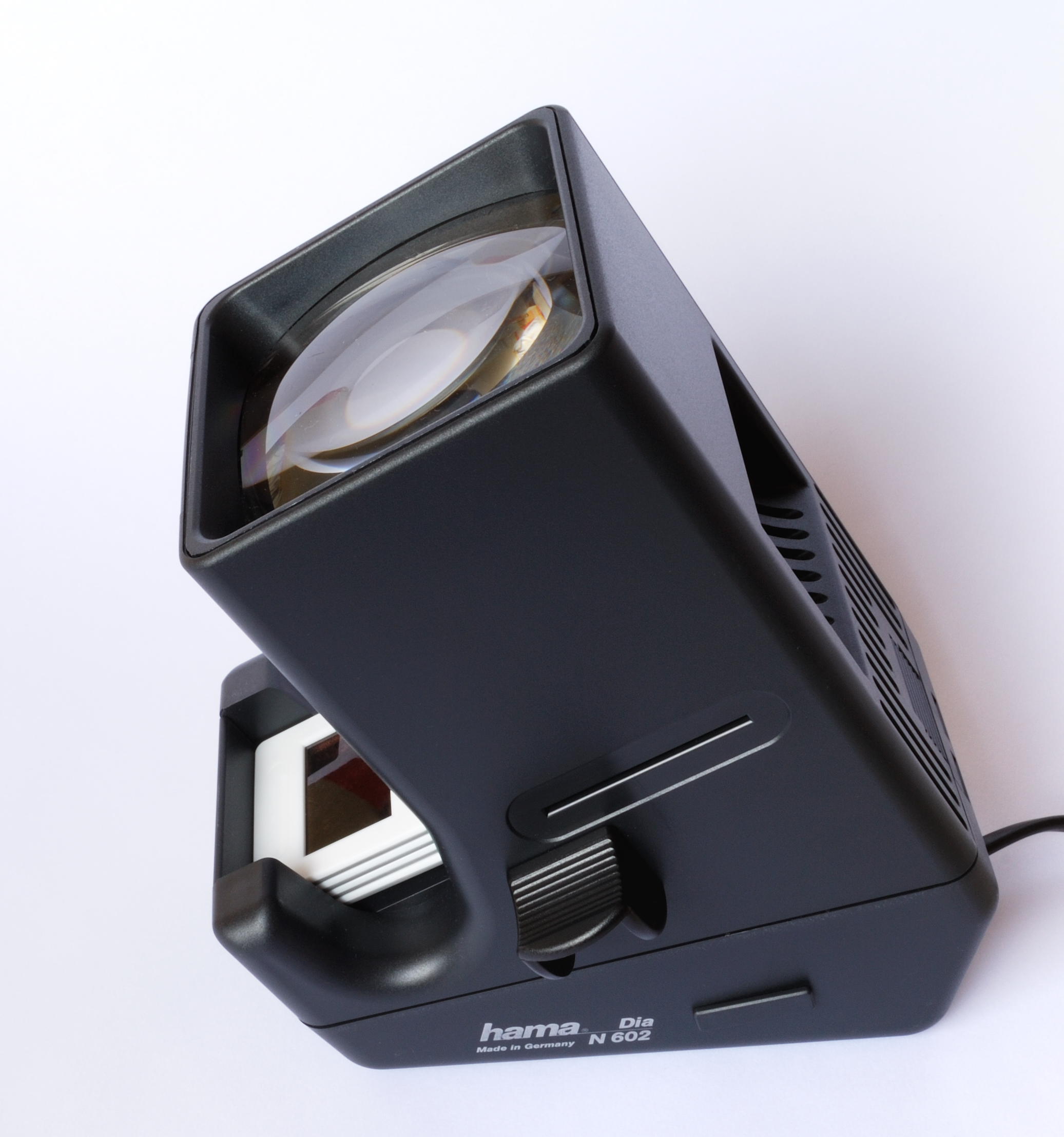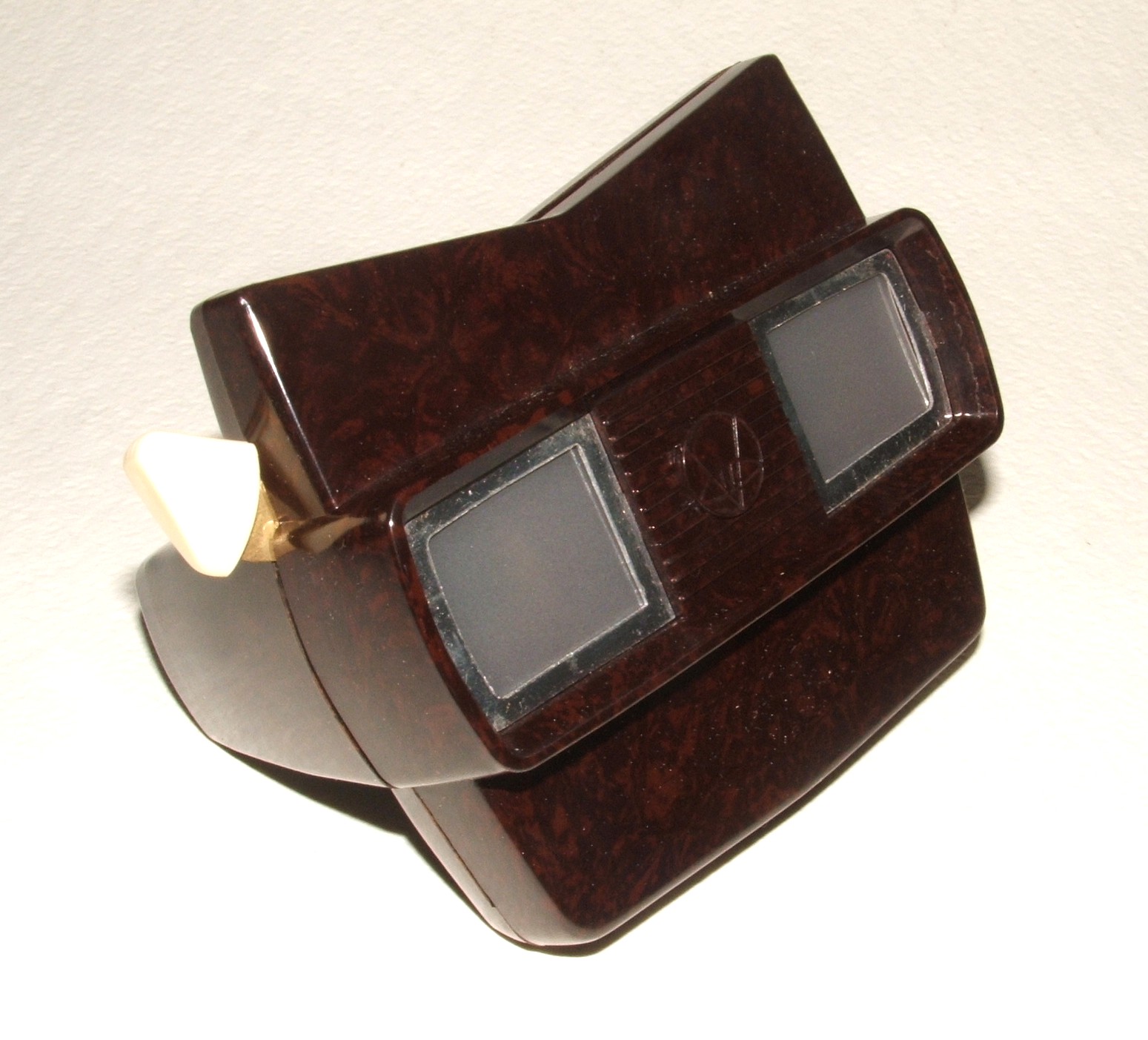Slide viewer on:
[Wikipedia]
[Google]
[Amazon]
 A slide viewer (also called transparency viewer) is a device for looking at film transparencies or similar photographic images.
A slide viewer (also called transparency viewer) is a device for looking at film transparencies or similar photographic images.
 The practice of viewing
The practice of viewing
File:Agfa Gucki BW 1.JPG, Agfa slide viewer
File:Slide magnifier.jpg, Slide magnifier with slides
File:Diabetrachter BW 1.JPG, Slide viewer for 6x6 slides
File:Krokus1.jpg, "KROKUS DIA" slide viewer, product of PZO, Poland
File:Диаскоп Ленинград (1979 год).JPG, Slide viewer Leningrad (1979)
File:Diapositive.jpg, Slide frames, 1940 (metal or card) to 1985 (plastic)
File:FarbDia.jpg, Strip of film
File:Stereoviewers.jpg, Some 20th century stereoviewers: View-Masters, Stereoclic Brugiere, Stereoscope Lestrade, Tru-Vue
File:Maliskop mit Dias.JPG, A Maliscop, a 35 mm stereo slide viewer from Heirich Malinski, Leipzig.
File:3D-Dia-Betrachter.jpg, Pentax viewer for 35 mm split-frame stereo slides, portrait-format images
File:Stereoscoop Hama.JPG, Hama stereo viewer
File:Men using a Slide Viewer.jpg, Viewing slides in San Francisco's coroner's office, 1978
File:View-Master Model G.jpg, A View-Master Model G, introduced in 1962
 A slide viewer (also called transparency viewer) is a device for looking at film transparencies or similar photographic images.
A slide viewer (also called transparency viewer) is a device for looking at film transparencies or similar photographic images.
Description
A slide viewer is usually a small handheld device with a slot in which a slide can be inserted to see a magnified illuminated view of it. A slide viewer is an instrument for individual viewing. Some models have an automatic feeder for inserting multiple slides and some have a slot for a strip of film. The slide viewer may rely upon natural light or incorporate a light source.Stereo slide viewer
stereoscopic
Stereoscopy, also called stereoscopics or stereo imaging, is a technique for creating or enhancing the illusion of depth in an image by means of stereopsis for binocular vision. The word ''stereoscopy'' derives . Any stereoscopic image is ...
film-based transparencies through a small magnifying viewer dates to at least as early as 1931, when Tru-Vue
Tru-Vue, a subsidiary of Rock Island Bridge and Iron Works, was a manufacturer of stereoscopic filmstrips and corresponding stereoscope viewers, based in Rock Island, Illinois, from 1932 to 1951 and in Beaverton, Oregon, from 1951 until the late 1 ...
began to market black-and-white
Black-and-white (B&W or B/W) images combine black and white to produce a range of achromatic brightnesses of grey. It is also known as greyscale in technical settings.
Media
The history of various visual media began with black and white, ...
35 mm filmstrips that were fed through a handheld viewer made of Bakelite
Bakelite ( ), formally , is a thermosetting polymer, thermosetting phenol formaldehyde resin, formed from a condensation reaction of phenol with formaldehyde. The first plastic made from synthetic components, it was developed by Belgian chemist ...
.
In 1939, a radically different viewer, also designed for use with commercially prepared stereo images, was introduced as the View-Master. Images in color on small pieces of Kodachrome
Kodachrome is the brand name for a color reversal film introduced by Eastman Kodak in 1935. It was one of the first successful color materials and was used for both cinematography and still photography. For many years, Kodachrome was widely used ...
film came mounted in rectangular openings near the edge of a cardboard disk, which, despite being quite flat, was officially known as a View-Master "reel". Each reel contained seven image pairs, the left-eye and right-eye images being diametrically opposite. A lever was used to rotate the reel in increments so as to present each image pair in sequence. Eventually, the viewers were available in several models, including some that were illuminated by flashlight bulbs powered by a line current transformer or batteries, as well as "talking" View-Masters. Viewers and reels in the View-Master format are still being made today. One category of material still in production is children's fairy tale
A fairy tale (alternative names include fairytale, fairy story, household tale, magic tale, or wonder tale) is a short story that belongs to the folklore genre. Such stories typically feature magic, enchantments, and mythical or fanciful bei ...
story scenes and brief stories using popular cartoon
A cartoon is a type of visual art that is typically drawn, frequently Animation, animated, in an realism (arts), unrealistic or semi-realistic style. The specific meaning has evolved, but the modern usage usually refers to either: an image or s ...
characters. These use photographs of three-dimensional model sets and characters. Another category is scenic views associated with a tourist destination, typically sold at gift shops located at the attraction.
A major innovation in 1947 was the introduction of the Stereo Realist camera and viewer system. Using Kodachrome or other 35 mm slide film, this equipment made startlingly lifelike amateur stereoscopic color photography possible at a reasonable cost. The system was well-advertised and experienced a surge in popularity. Other makes of cameras employing the Realist format began appearing in the early 1950s. The Stereo Realist and competing products can still be found in estate sales and elsewhere, and some enthusiasts still use them to take pictures.
An advantage offered by transparency viewing as compared to earlier card stereoscope
A stereoscope is a device for viewing a stereoscopy, stereoscopic pair of separate images, depicting left-eye and right-eye views of the same scene, as a single three-dimensional image.
A typical stereoscope provides each eye with a lens that ...
s is that a wider field of view may be presented because the images, being illuminated from the rear, may be placed much closer to the lenses. In ordinary viewers, the simple, inexpensive lenses necessarily have relatively long focal lengths so that the entirety of the images will appear reasonably sharp, and consequently the field of view occupied by the images is small. To magnify the images so that they will occupy a much larger visual angle and still be sharp and undistorted, suitable high-quality multi-element short focal length lenses must be used. Such lenses are quite expensive and are not found in most stereo viewers. For optimum realism, the images to be so viewed must be created using equivalent wide-angle camera lenses.
Gallery
See also
* Loupe *Slide projector
A slide projector is an optical device for projecting enlarged images of photographic slides onto a screen. Many projectors have mechanical arrangements to show a series of slides loaded into a special tray sequentially.
35 mm slide p ...
References
{{Reflist Photography equipment Stereoscopic photography